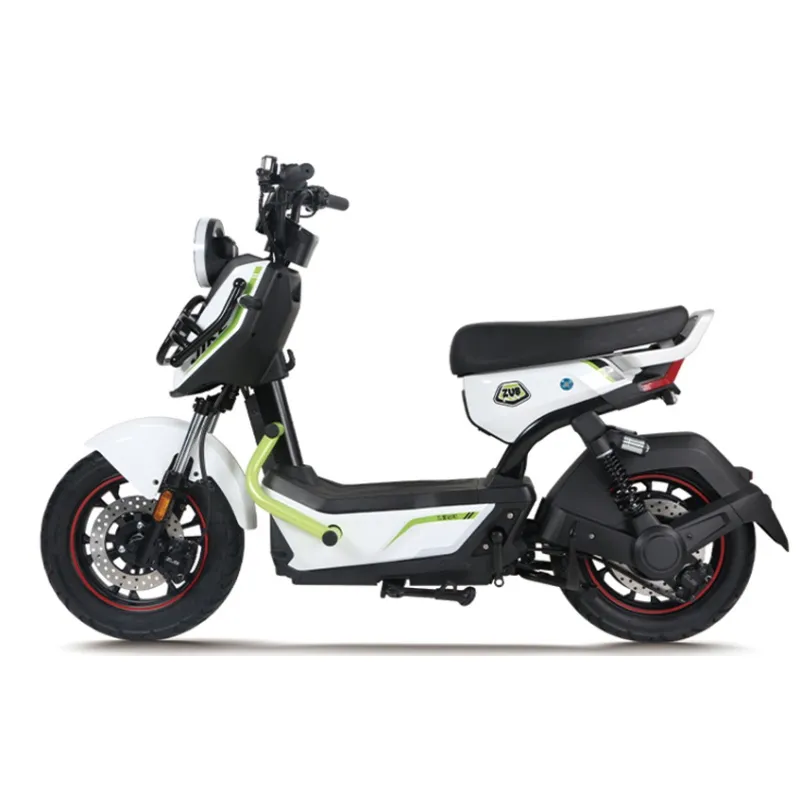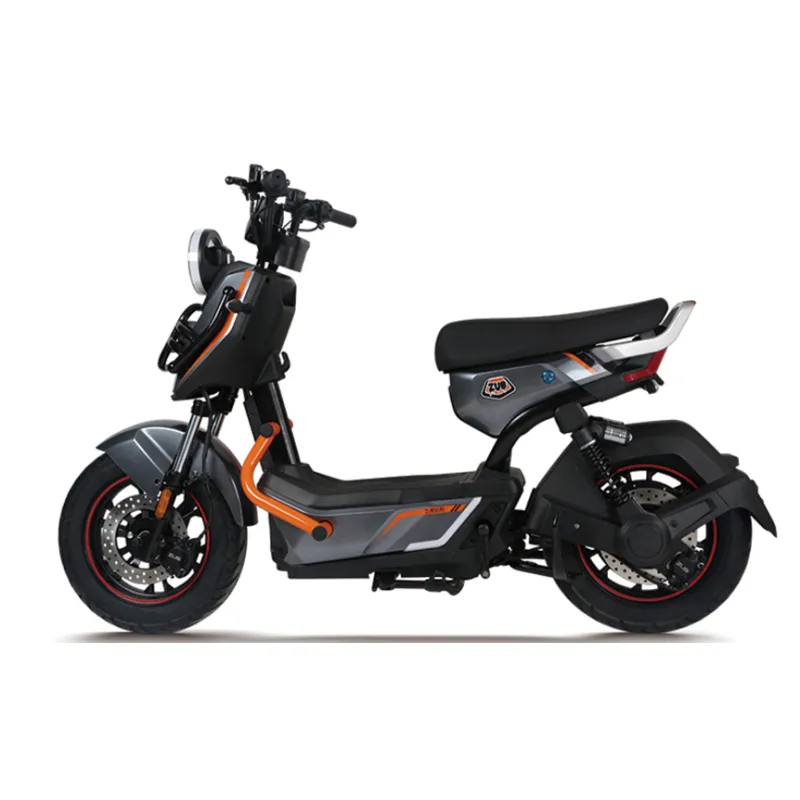The Revolution of Modern E-Mobility with Electric Bicycles
In today’s fast-paced world, the way we move around is constantly evolving. Electric bicycles have emerged as a breakthrough in personal transportation, merging speed, comfort, and eco-friendliness into one efficient package. With growing urban congestion and an increased focus on sustainability, electric bicycles offer a compelling alternative to traditional commuting methods. These bikes provide the perfect balance between pedal power and motor assistance, giving riders a smooth, fast, and comfortable ride whether they are navigating city streets or exploring suburban paths.
The transformation brought by electric bicycles goes beyond convenience—it reshapes the very experience of cycling. No longer limited by physical exertion, riders can enjoy longer trips, tackle hills effortlessly, and arrive at their destinations refreshed rather than exhausted. As battery technology advances, the range and reliability of electric bicycles continue to improve, making modern e-mobility accessible to a broader audience.
The New Era of Speed in Electric Bicycles
How Motor Assistance Enhances Speed
Electric bicycles utilize a motor to assist the rider’s pedaling, allowing for quicker acceleration and higher sustained speeds than traditional bikes. This feature is particularly valuable in urban environments where frequent stops and starts are common. The motor support ensures riders can maintain consistent speeds even in heavy traffic or on inclines.
Unlike traditional bikes, where the rider’s physical strength limits speed, electric bicycles empower users to reach their destinations faster with less effort. This increase in average speed transforms daily commuting into a more time-efficient activity, encouraging more people to choose electric bicycles for their everyday transportation needs.
Impact of Speed on Commuting and Recreation
The speed capabilities of electric bicycles not only enhance commuting but also add excitement to recreational rides. Riders can cover more ground in less time, opening opportunities to explore new routes or enjoy longer trips without worrying about fatigue. Faster speeds mean that electric bicycles can rival cars and public transport in many urban settings, making them a practical and enjoyable choice.
Moreover, the ability to adjust motor assistance levels gives riders control over their speed, enabling a tailored experience that balances pace with comfort.

Comfort as a Key Feature of Modern Electric Bicycles
Ergonomic Design for Enhanced Ride Quality
Comfort is a major consideration in the design of electric bicycles. Manufacturers prioritize ergonomics, incorporating adjustable seats, handlebars, and suspension systems to reduce strain during rides. These elements work together to minimize fatigue, especially on longer journeys or rough terrain.
Electric bicycles also often include wider tires and shock absorption features, which help smooth out bumps and provide a stable, secure ride. This focus on comfort ensures that riders enjoy their time on the bike without discomfort or physical stress.
Reduced Physical Strain and Accessibility
Electric bicycles reduce the physical demands of cycling by providing motorized assistance. This support makes cycling accessible to a wider range of individuals, including those with limited fitness, older adults, or people recovering from injury. Riders can choose how much help they receive from the motor, allowing them to pedal as much or as little as they like.
The reduced effort required on an electric bicycle encourages consistent use and longer rides, promoting health benefits without the risk of overexertion. This combination of comfort and accessibility contributes to the growing popularity of electric bicycles.
Technology Driving the Performance of Electric Bicycles
Advanced Battery Systems and Range
Battery technology is central to the performance and appeal of electric bicycles. Modern batteries provide high capacity and long-lasting power, enabling riders to travel significant distances on a single charge. Lithium-ion batteries dominate the market due to their efficiency, lightweight design, and durability.
Smart battery management systems optimize power use and extend battery life, making electric bicycles reliable for daily commuting and longer adventures. The improvements in charging speed and battery lifespan continue to push the boundaries of what electric bicycles can achieve in terms of speed and comfort.
Intelligent Controls and Connectivity
Many electric bicycles feature integrated technology that enhances the riding experience. Digital displays offer real-time information about speed, battery status, distance traveled, and motor assistance level. Riders can easily switch between modes to adapt to different terrains or conserve battery life.
Connectivity features such as smartphone integration allow users to customize settings, track rides, and receive maintenance alerts. These smart controls make electric bicycles more user-friendly and enhance overall safety and convenience.
Environmental and Economic Benefits of Electric Bicycles
Reducing Carbon Footprint and Urban Pollution
Electric bicycles represent a clean transportation alternative that produces no direct emissions. By replacing short car trips, electric bicycles contribute to reduced air pollution and lower greenhouse gas emissions in urban areas. This environmental impact aligns with global efforts to combat climate change and promote sustainable living.
The quiet operation of electric bicycles also helps reduce noise pollution, improving the quality of life in busy cities. Choosing an electric bicycle supports greener urban environments and healthier communities.
Cost-Effectiveness and Long-Term Savings
While the upfront cost of an electric bicycle is higher than that of a traditional bike, the overall economic benefits are substantial. Electric bicycles eliminate fuel costs and reduce expenses related to parking and vehicle maintenance. The cost of charging an electric bicycle battery is minimal compared to gasoline or public transport fares.
In addition, electric bicycles typically require less frequent servicing than motor vehicles, contributing to lower ongoing costs. These financial advantages make electric bicycles a smart investment for those seeking affordable, reliable transportation.
Practical Tips for Maximizing Electric Bicycle Speed and Comfort
Optimizing Battery Use and Maintenance
To enjoy the full speed and comfort potential of an electric bicycle, proper battery care is essential. Avoid fully depleting the battery before charging and store it in moderate temperatures to preserve its longevity. Regularly check connections and clean battery contacts to ensure optimal performance.
Following manufacturer guidelines for charging and maintenance helps sustain battery health, allowing riders to experience consistent power and speed over time.
Adjusting Riding Style for Comfort and Efficiency
Comfort and speed on an electric bicycle can be further improved by adopting a smooth and steady riding style. Avoid abrupt acceleration or heavy braking to conserve battery power and maintain balance. Use the pedal-assist settings to find a comfortable level of support that matches your fitness and riding conditions.
Wearing appropriate cycling gear and ensuring the bike fits well can also enhance comfort, making each ride more enjoyable and less tiring.
FAQ
What is the average speed of an electric bicycle?
Electric bicycles typically reach speeds between 15 and 28 mph, depending on motor power and local regulations. This allows for faster travel compared to traditional bikes while maintaining safety.
How far can an electric bicycle travel on one battery charge?
The range varies by battery capacity, terrain, and usage but generally falls between 20 and 60 miles per charge. Advances in battery technology continue to increase this range.
Is riding an electric bicycle suitable for beginners?
Yes, electric bicycles are beginner-friendly due to adjustable motor assistance, which helps new riders manage speed and effort comfortably.
How often should I charge the battery to maintain its health?
It’s best to keep the battery charge between 20% and 80%, avoiding full depletion or overcharging. Charging after moderate use supports longer battery lifespan.
Table of Contents
- The Revolution of Modern E-Mobility with Electric Bicycles
- The New Era of Speed in Electric Bicycles
- Comfort as a Key Feature of Modern Electric Bicycles
- Technology Driving the Performance of Electric Bicycles
- Environmental and Economic Benefits of Electric Bicycles
- Practical Tips for Maximizing Electric Bicycle Speed and Comfort
- FAQ

